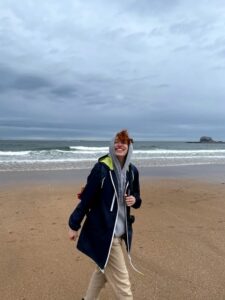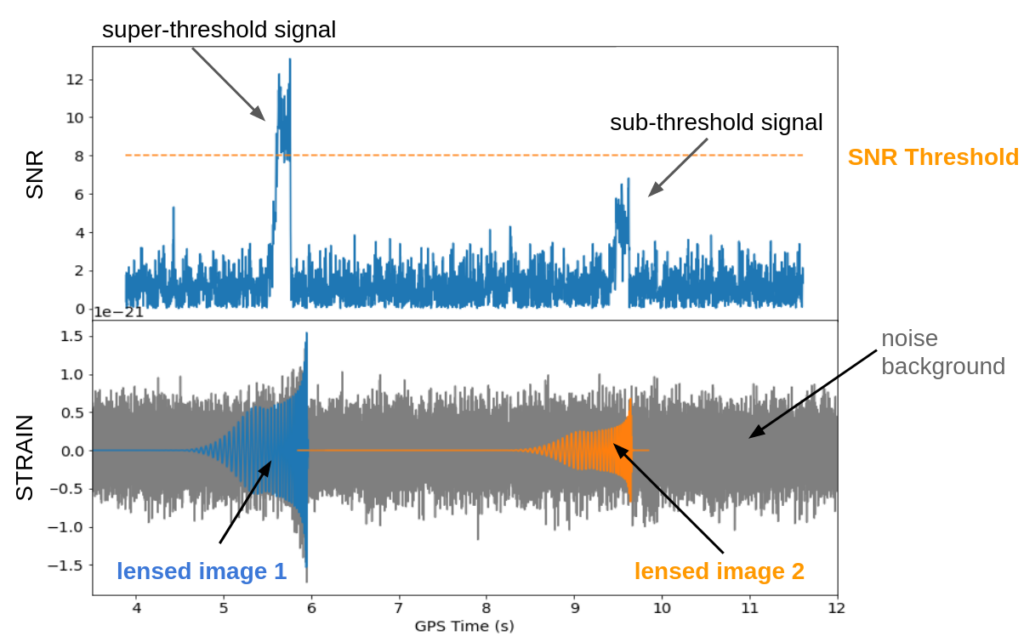The Undergraduate Research series is where we feature the research that you’re doing. If you are an undergraduate that took part in an REU or similar astro research project and would like to share this on Astrobites, please check out our submission page for more details. We would also love to hear about your more general research experience!

Storm Colloms
University of Edinburgh
This guest post was written by Storm Colloms. Storm is a final year integrated master’s student at the University of Edinburgh, studying astrophysics. They were part of the 2021 LIGO SURF program at Caltech, working with Alvin Li and Professor Alan Weinstein.
(twitter: @chirpmass)
Over 90 gravitational wave events have been detected with LIGO–Virgo from the merging of compact objects since their first detection in 2015. It is predicted that some of these gravitational waves could be lensed by lens masses such as galaxy clusters, curving the intervening spacetime between us and the gravitational wave source. While this is yet to have been observed, there are different pipelines which work in different ways to search for gravitational lensing in LIGO-Virgo data.
In this work I implemented a constraint on the one of the search pipelines for lensed images of gravitational waves, specifically searching for those whose amplitudes are reduced via lensing, making them sub-threshold images hidden amongst noise in the detectors (Figure 1). This constraint exploits a feature of lensed images: while the lensed images will appear to come from slightly different locations on the sky due to distortion by the lens, these separations between images are much much smaller than the current error on sky localisations of gravitational waves. Therefore, lensed images of gravitational waves can be approximated to come from the same place on the sky.

The improvements I made to the pipeline aim to highlight in the results of the search sub-threshold lensed images which come from a similar area on the sky to a previously detected gravitational wave event. We can measure the sky location of an incoming gravitational wave from two values for each pair of operating detectors: the difference in arrival time of the gravitational wave at each detector and the difference in phase (Figure 2). I tested the updated pipeline on real data and observed changes in the ordering of the lensed image candidates in the results of the search, where the likelihood of a signal being a true lensed image is determined and listed in order of most to least likely.
With more testing on simulated lensed images, this work has a large potential to increase the detectability of sub-threshold lensed gravitational waves. Hopefully, it won’t be too long before we can dig these shrunken waves out of the data!

Featured image credit: Riccardo Buscicchio (University of Birmingham) via ligo.org
Astrobite edited by: Sumeet Kulkarni
